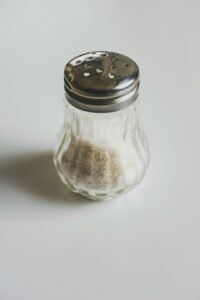Comprehensive Guide of Sourdough Bread Making
Overview
Sourdough bread making is a fascinating and rewarding hobby that involves the fermentation of dough using naturally occurring yeast and bacteria. This traditional method of bread making dates back thousands of years and is characterized by its unique tangy flavor, chewy texture, and crusty exterior. The process begins with creating a sourdough starter, a mixture of flour and water that captures wild yeast from the environment. This starter is then used to leaven the bread, resulting in a loaf that is not only delicious but also easier to digest due to the fermentation process. Sourdough bread making allows individuals to experiment with different flours, hydration levels, and fermentation times, making it a versatile and creative culinary pursuit.
History
The history of sourdough bread making can be traced back to ancient civilizations, with evidence of sourdough fermentation found in Egyptian tombs dating as far back as 1500 BC. The process of using wild yeast for leavening was likely discovered by accident when dough was left out and naturally fermented. Sourdough became a staple in many cultures, particularly in Europe, where it was the primary method of bread making until the advent of commercial yeast in the 19th century. During the California Gold Rush in the mid-1800s, sourdough gained popularity among miners, leading to the term ‘sourdough’ being associated with those who carried their starters with them. In recent years, there has been a resurgence of interest in artisanal bread making, with many home bakers embracing the traditional techniques of sourdough to create flavorful and wholesome bread.
Popularity and Demographics
Sourdough bread making has seen a significant rise in popularity, particularly during the COVID-19 pandemic, when many people turned to baking as a comforting and productive activity. This hobby appeals to a wide demographic, including young adults, families, and retirees, with a growing community of enthusiasts sharing their experiences and tips online. Social media platforms, such as Instagram and TikTok, have played a crucial role in popularizing sourdough, with countless tutorials, recipes, and success stories inspiring others to try their hand at this age-old craft. Additionally, the increasing interest in homemade and artisanal foods has led to a greater appreciation for the skills involved in sourdough bread making, making it a fulfilling and engaging hobby for many.
Sponsored Hobbyists and Vendors
Become a Sponsor!
Affiliate Disclaimer: Throughout some sections below, Hobby Spotlight may suggest some tools, equipment or material using affiliate links. By purchasing any of those items, Hobby Spotlight may earn a small commission. This helps fund our website, content and services without directly charging our users.
Getting Started
Essential Tools and Equipment:
Beginner
- Sourdough Starter Kit: Includes everything needed to create and maintain a sourdough starter.
- Digital Kitchen Scale: Accurate scale for measuring ingredients by weight.
- Mixing Bowl Set: A set of mixing bowls for combining ingredients.
- Bench Scraper: Tool for cutting and shaping dough.
- Lame for Scoring Bread: A tool for scoring dough before baking.
Intermediate
- Dutch Oven: Ideal for baking sourdough bread with a crispy crust.
- Proofing Basket: Baskets used for proofing dough to maintain shape.
- Bread Baking Stone: Stone for baking bread to achieve a crispy bottom.
- Thermometer for Baking: Digital thermometer to check dough and oven temperatures.
- Silicone Baking Mat: Reusable mat for rolling out dough and baking.
Basic Requirements and Initial Setup:
- Quality Ingredients: Use high-quality flour, water, salt, and a sourdough starter. The quality of ingredients significantly impacts the flavor and texture of the bread.
- Tools and Equipment: Essential tools include a mixing bowl, a bench scraper, a kitchen scale for precise measurements, a proofing basket (banneton), and a Dutch oven or baking stone for baking.
- Workspace: A clean, spacious countertop or table is necessary for mixing, kneading, and shaping the dough. Ensure good ventilation and a comfortable temperature for fermentation.
Fundamental Skills to Learn:
- Understanding Fermentation: Learn how to manage the fermentation process, which is crucial for developing flavor and texture in sourdough.
- Kneading Techniques: Master different kneading methods, such as stretch and fold, to develop gluten structure in the dough.
- Shaping Dough: Practice shaping techniques to create tension in the dough, which helps achieve a good rise during baking.
- Temperature Management: Understand how temperature affects fermentation and baking, including the ideal range for sourdough development.
- Baking Techniques: Learn how to properly preheat your oven and use steam to create a crispy crust on your sourdough bread.
Sub-Hobby/Common Activities:
- Starter Maintenance: Regularly feeding and caring for your sourdough starter to keep it active and healthy.
- Experimenting with Flours: Trying different types of flour, such as whole wheat, rye, or spelt, to create unique flavors and textures.
- Flavor Additions: Incorporating ingredients like herbs, seeds, nuts, or dried fruits to enhance the flavor profile of your bread.
- Creating Sourdough Variations: Making different types of sourdough bread, such as baguettes, boules, or focaccia.
- Sharing and Community Engagement: Joining local or online sourdough communities to share tips, recipes, and experiences with fellow enthusiasts.
Terminology:
- Sourdough Starter: A mixture of flour and water that captures wild yeast and bacteria, used to leaven sourdough bread.
- Autolyse: A resting period where flour and water are mixed and allowed to hydrate before adding salt and starter, improving dough extensibility.
- Bulk Fermentation: The first rise of the dough after mixing, where yeast activity develops flavor and structure.
- Proofing: The final rise of shaped dough before baking, allowing the dough to expand and develop flavor.
- Scoring: Making cuts on the surface of the dough before baking to control the expansion and create an attractive crust.
- Crust: The outer layer of the bread that forms during baking, contributing to texture and flavor.
- Crumb: The internal texture of the bread, which can vary from open and airy to dense and tight.
- Levain: A portion of the sourdough starter that is fed and used to inoculate the dough for baking.
- Hydration Level: The ratio of water to flour in the dough, affecting the bread’s texture and crumb structure.
- Stretch and Fold: A technique used during bulk fermentation to strengthen the dough without traditional kneading.
Advanced Topics and Specializations
Advanced Tools and Equipment:
- Banneton Proofing Basket: A round or oval basket used for proofing sourdough, helping to shape the dough and create a beautiful pattern on the crust.
- Digital Kitchen Scale: A precise scale for measuring ingredients by weight, ensuring accuracy in your sourdough recipes.
- Lame Bread Scoring Tool: A specialized tool with a razor blade for scoring dough before baking, allowing for controlled expansion and artistic designs.
- Dutch Oven: A heavy cast iron pot that retains heat well, ideal for baking sourdough bread with a crispy crust.
- Sourdough Starter Kit: A comprehensive kit that includes everything needed to create and maintain a healthy sourdough starter.
Advanced Projects and Achievements:
- Creating a Unique Sourdough Starter: Developing a personalized sourdough starter from wild yeast and local flour, resulting in distinct flavors and characteristics.
- Artisan Sourdough Loaves: Mastering the art of shaping and scoring loaves to produce visually stunning and flavorful artisan breads.
- Fermented Sourdough Products: Expanding beyond bread to create sourdough pancakes, waffles, and pizza crusts, showcasing versatility in sourdough baking.
Advanced Techniques and Methods:
- Autolyse Method: Allowing flour and water to rest before adding salt and starter, enhancing gluten development and flavor.
- Stretch and Fold Technique: Using a series of stretch and folds during bulk fermentation to strengthen the dough without kneading.
- Cold Fermentation: Refrigerating the dough for an extended period to develop complex flavors and improve texture.
Specializations and Niche Areas:
- Whole Grain Sourdough: Utilizing whole grain flours to create nutritious and hearty sourdough breads.
- Gluten-Free Sourdough: Experimenting with gluten-free flours and techniques to produce sourdough bread suitable for those with gluten sensitivities.
- Flavored Sourdough: Incorporating ingredients like herbs, spices, and fruits to create unique flavor profiles in sourdough loaves.
Future Trends and Innovations:
- Increased focus on sustainable and organic ingredients in sourdough baking.
- Growing popularity of sourdough baking classes and workshops, both in-person and online.
- Integration of health-conscious practices, such as using ancient grains and reducing salt content.
- Emergence of sourdough baking communities and social media groups for sharing tips and recipes.
- Development of specialized sourdough baking tools and equipment to enhance the baking experience.
Technology Integration:
- Smart Kitchen Scales: Devices that connect to apps for precise ingredient measurements and tracking hydration levels.
- Recipe Apps: Mobile applications that provide step-by-step instructions and allow users to customize recipes based on their preferences.
- Online Baking Communities: Platforms where bakers can share their creations, seek advice, and participate in challenges.
- Temperature-Controlled Proofing Boxes: Equipment that maintains optimal conditions for dough fermentation.
- Virtual Reality Baking Experiences: Innovative technology that allows users to practice baking techniques in a virtual environment.
Further Learning and Resources
Books:
- Sourdough Starter by Brian Hart Hoffman: An excellent introduction to sourdough bread making, this book covers the basics of creating and maintaining a sourdough starter, along with simple recipes.
- The Sourdough School by Vanessa Kimbell: This book provides a comprehensive guide to sourdough bread making, including step-by-step instructions and tips for beginners to create delicious loaves.
- Sourdough: Recipes for Rustic Fermented Breads, Sweets, Savories, and More by Sarah Owens: A beginner-friendly book that offers a variety of sourdough recipes, focusing on the fermentation process and how to incorporate sourdough into different baked goods.
- Tartine Bread by Chad Robertson: A highly regarded book that delves into the art and science of sourdough bread making, featuring in-depth techniques and recipes for experienced bakers.
- Flour Water Salt Yeast by Ken Forkish: This book offers advanced techniques and recipes for crafting artisanal sourdough bread, with a focus on the importance of ingredients and fermentation.
- The Bread Baker’s Apprentice by Peter Reinhart: A classic in the baking community, this book provides detailed insights into sourdough and other bread-making techniques, suitable for those looking to refine their skills.
Websites:
- The Perfect Loaf, https://www.theperfectloaf.com – A comprehensive resource for sourdough enthusiasts, featuring detailed recipes, techniques, and troubleshooting tips.
- King Arthur Baking Company, https://www.kingarthurbaking.com – Offers a variety of sourdough recipes, baking tips, and a community forum for bakers of all levels.
- Wild Yeast, http://www.wildyeastblog.com – Focuses on sourdough bread making with a collection of recipes, techniques, and insights into the science of fermentation.
- Food52, https://www.food52.com – A community-driven site that features a variety of sourdough recipes and baking advice from home cooks and professionals.
- Serious Eats – Sourdough Section, https://www.seriouseats.com/sourdough – Provides in-depth articles, recipes, and expert advice on sourdough bread making.
Courses:
- King Arthur Baking School Courses, https://www.kingarthurbaking.com/courses – Offers a range of online and in-person classes focused on sourdough and other baking techniques for all skill levels.
- Udemy Sourdough Courses, https://www.udemy.com/courses/search/?q=sourdough – A variety of beginner to advanced courses covering sourdough bread making, fermentation, and baking techniques.
- Skillshare Sourdough Classes, https://www.skillshare.com/browse/sourdough – Project-based learning with classes from experienced bakers focusing on sourdough techniques and recipes.
- MasterClass with Chad Robertson, https://www.masterclass.com/classes/chad-robertson-teaches-sourdough-bread – Learn the art of sourdough bread making from a renowned baker, covering everything from starter to baking.
- The Sourdough School, https://www.sourdough.co.uk – Offers online courses and workshops focused on sourdough bread making, including beginner and advanced techniques.
Content Creators and Community
Content Creators:
- Tartine Bakery (YouTube): Renowned for their artisanal sourdough techniques, they share in-depth tutorials and insights into the science of bread making.
- The Sourdough School (Instagram): Offers tips, recipes, and educational content focused on sourdough baking, emphasizing health and flavor.
- Bread Ahead (YouTube): Known for their engaging sourdough tutorials and bakery insights, they provide a wealth of knowledge for aspiring bakers.
- King Arthur Baking Company (Instagram): A trusted source for baking recipes, including sourdough, with a focus on quality ingredients and techniques.
- Food52 (YouTube): Features a variety of baking content, including sourdough recipes and tips from expert bakers.
- Sourdough Lover (Instagram): Shares beautiful sourdough creations and practical tips for home bakers looking to improve their skills.
- Joshua Weissman (YouTube): Offers detailed sourdough tutorials along with a variety of other baking techniques, focusing on homemade and from-scratch recipes.
Online Forums and Social Media Groups:
- Reddit – /r/Sourdough: A community for sharing recipes, troubleshooting, and discussing all things sourdough.
- Facebook Sourdough Groups: Various groups where enthusiasts share tips, photos, and advice on sourdough baking.
- Sourdough Baking Community (Discord): An interactive platform for live discussions, recipe exchanges, and support.
- Instagram Hashtags (#sourdough, #sourdoughbread): Follow trending recipes, techniques, and inspiring visuals from bakers worldwide.
- Pinterest Boards: Discover endless sourdough recipe ideas and baking inspirations curated by passionate bakers.
Local Clubs and Organizations:
- Community Baking Workshops: Many cities offer local classes and baking clubs where enthusiasts can learn and share sourdough techniques.
- Local Culinary Schools: Often host evening or weekend classes focused on sourdough and other bread-making techniques.
- Farmers’ Market Associations: Support local bakers by providing networking and selling opportunities for sourdough products.
- Artisan Bakery Guilds: Groups that offer mentoring, competitions, and community outreach for sourdough bakers.
- Meetup Groups: Platforms like Meetup.com host local sourdough baking clubs and recipe exchange gatherings.
Events, Meetups, and Conventions:
- Sourdough Festival: An event dedicated to celebrating sourdough with workshops, tastings, and competitions.
- Local Baking Competitions: Regional contests that encourage skill development and creative expression in sourdough baking.
- Food Festivals: Many festivals feature sourdough baking demos, tastings, and classes for enthusiasts.
- Workshops at Culinary Exhibitions: Learn from professional bakers and skilled hobbyists specializing in sourdough.
- Baking Conventions: Integrated events that combine competitions, networking, and product showcases related to sourdough and other baking techniques.
Associated Hobbies
- Baking: Many sourdough enthusiasts also enjoy exploring other baking techniques, such as making pastries, cookies, and cakes, which can complement their sourdough skills.
- Fermentation: The process of sourdough bread making involves fermentation, which can lead to an interest in other fermented foods like kimchi, yogurt, and kombucha.
- Gardening: Growing your own herbs and vegetables can enhance the sourdough experience, allowing bakers to incorporate fresh ingredients into their recipes.
- Food Photography: Capturing the beauty of freshly baked sourdough can become a hobby in itself, as many bakers enjoy sharing their creations on social media.
- Recipe Development: Experimenting with different ingredients and techniques to create unique sourdough recipes can be a rewarding and creative outlet for bakers.
- Cooking Classes: Many sourdough enthusiasts seek out cooking classes to improve their skills, learn new techniques, and connect with others who share their passion.
- Community Involvement: Joining local baking groups or online forums can foster a sense of community among sourdough bakers, allowing them to share tips, recipes, and experiences.
- Artisan Bread Making: Exploring other types of artisan bread, such as ciabatta or baguettes, can expand a baker’s repertoire and deepen their understanding of bread-making techniques.
Cost and Budgeting
Initial Investment and Ongoing Costs:
- Initial Investment: To start sourdough bread making, the initial investment is relatively low. Basic equipment includes a mixing bowl, a bench scraper, a kitchen scale, and a Dutch oven or baking stone. This can cost around $50-$150. Additionally, you’ll need ingredients such as flour, water, and salt, which can cost about $10-$20 to get started.
- Ongoing Costs: The ongoing costs primarily involve purchasing flour, which can range from $3 to $10 per bag, depending on the type and quality. Other ingredients like salt and water are minimal in cost. If you choose to maintain a sourdough starter, you may need to feed it regularly with flour, which adds to the ongoing expense, but it’s generally quite low.
Budget-Friendly Options:
- DIY Equipment: Instead of purchasing expensive tools, you can use household items like a large bowl for mixing and a regular baking sheet instead of a Dutch oven. This can significantly reduce your initial costs.
- Bulk Buying: Purchase flour in bulk from local mills or wholesale stores to save money over time. This is especially beneficial if you plan to bake frequently.
- Free Online Resources: Utilize free online tutorials, videos, and recipes to learn sourdough techniques without spending money on classes or books.
Where to Buy:
- Local Grocery Stores: Most grocery stores carry the basic ingredients needed for sourdough, such as flour and salt, making it easy to find what you need.
- Specialty Baking Stores: These stores often offer a variety of flours, including whole grain and specialty types, as well as baking tools and equipment.
- Online Retailers: Websites like Amazon and King Arthur Baking offer a wide selection of baking supplies, including high-quality flours and baking tools, often with the convenience of home delivery.
Money Making
How to Turn the Hobby into a Profession or Side Hustle:
- Sourdough Bakery Owner: Start your own bakery specializing in sourdough bread. With a focus on quality ingredients and traditional methods, you can attract customers who appreciate artisanal bread. Consider offering a variety of sourdough products, including loaves, rolls, and pastries, to cater to different tastes.
- Sourdough Bread Classes: Share your knowledge by offering workshops or classes on sourdough bread making. You can host these classes in your home, local community centers, or even online. Teach participants about the fermentation process, kneading techniques, and how to create different types of sourdough bread.
- Sourdough Recipe Blog or YouTube Channel: Create a blog or YouTube channel dedicated to sourdough bread making. Share your recipes, tips, and techniques with a wider audience. Monetize your content through ads, sponsorships, and affiliate marketing by promoting baking tools and ingredients.
- Sourdough Starter Sales: Develop and sell your own sourdough starter kits. Many home bakers are eager to start their sourdough journey but may not know where to begin. Provide a high-quality starter along with instructions and tips for maintaining it, making it easy for newcomers to get started.
- Sourdough Catering Services: Offer catering services for events, providing freshly baked sourdough bread and related products. This could include bread for weddings, parties, or corporate events. Create a menu that highlights your unique sourdough offerings, and market your services to local businesses and individuals.
Benefits and Enjoyment
Physical, Mental, and Social Benefits:
- Physical Activity: Sourdough bread making involves various physical activities such as kneading dough, shaping loaves, and managing the fermentation process. This hands-on approach can improve hand strength, dexterity, and overall physical fitness.
- Mental Relaxation: The process of making sourdough can be meditative. Focusing on the rhythm of kneading and the science of fermentation allows for mindfulness, reducing stress and promoting mental clarity. The anticipation of watching the dough rise can also bring joy and satisfaction.
- Social Connection: Sharing homemade sourdough with friends and family fosters social bonds. Whether hosting a bread tasting or participating in a baking group, this hobby encourages community and connection through the love of food.
Success Stories and Inspirational Examples:
- Chad Robertson: Co-founder of Tartine Bakery in San Francisco, Chad Robertson is renowned for his artisanal sourdough. His dedication to the craft has inspired countless home bakers and has led to the publication of best-selling cookbooks, showcasing the beauty of sourdough bread making.
- Sarah Owens: A baker and author, Sarah Owens has gained recognition for her innovative approach to sourdough. Her award-winning book ‘Sourdough’ combines traditional techniques with modern flavors, inspiring bakers to experiment and embrace creativity in their baking.
- Peter Reinhart: A prominent baking educator and author, Peter Reinhart has written extensively about sourdough and its techniques. His teachings have influenced many aspiring bakers, helping them understand the science behind fermentation and the art of bread making.
Ways to Enjoy and Grow in the Hobby:
- Experiment with Different Flours: Try using various types of flour, such as whole wheat, rye, or spelt, to create unique flavors and textures in your sourdough. Each flour brings its own characteristics, allowing for endless experimentation.
- Join a Baking Community: Engage with local or online sourdough communities to share tips, recipes, and experiences. Participating in workshops or baking challenges can enhance your skills and provide inspiration.
- Document Your Journey: Keep a baking journal to track your sourdough experiments, noting what works and what doesn’t. This practice not only helps you learn but also allows you to reflect on your progress and celebrate your successes.
Challenges and Solutions
Common Challenges Faced by Hobbyists:
- Time Commitment: Sourdough bread making requires patience and time, from the initial starter preparation to the long fermentation process. Many hobbyists struggle to find the time to dedicate to this intricate process.
- Consistency in Results: Achieving the perfect loaf can be challenging due to variables like temperature, humidity, and flour quality. Beginners often find it difficult to replicate successful results.
- Understanding Techniques: The various techniques involved in sourdough baking, such as kneading, shaping, and scoring, can be overwhelming for newcomers. Misunderstanding these techniques can lead to unsatisfactory bread.
Tips for Overcoming These Challenges:
- Set a Schedule: Plan your baking sessions in advance. Allocate specific days for feeding your starter and baking to ensure you have enough time for each step of the process.
- Keep Detailed Notes: Document your baking process, including ingredients, timings, and environmental conditions. This will help you identify what works best and replicate successful loaves.
- Practice Techniques: Focus on mastering one technique at a time. For example, practice kneading or shaping separately before combining them in a full baking session.
Safety Considerations and Best Practices:
- Ensure your workspace is clean and sanitized to prevent contamination of your sourdough starter and bread.
- Use proper tools, such as a bench scraper and a sharp knife, to avoid accidents while shaping and scoring your dough.
- Be cautious when handling hot equipment, such as baking stones or Dutch ovens, to prevent burns.
- Store your sourdough starter in a safe place, away from direct sunlight and extreme temperatures, to maintain its health.
- Follow food safety guidelines when handling ingredients, especially when using perishable items like dairy or eggs in your recipes.
Conclusion and Encouragement
Recap of Key Points:
- Sourdough bread making is a rewarding hobby that combines art and science, allowing you to create delicious, homemade bread with unique flavors and textures.
- The key to successful sourdough is the starter, a natural leavening agent made from flour and water that captures wild yeast and bacteria from the environment.
- Patience is essential in sourdough bread making, as the fermentation process can take several hours or even days, resulting in a deeper flavor profile.
- This hobby promotes creativity, as you can experiment with different flours, hydration levels, and add-ins like seeds, nuts, or dried fruits to customize your bread.
- Sourdough bread making can be a social activity, as you can share your creations with friends and family or even join local baking groups to exchange tips and recipes.
Encouragement to Start and Enjoy the Hobby:
- Starting sourdough bread making is accessible to anyone, as all you need are basic ingredients—flour, water, and salt—and a little bit of time to nurture your starter.
- This hobby is a fantastic way to connect with the culinary arts, allowing you to explore the science of fermentation while enjoying the satisfaction of baking your own bread.
- Sharing your sourdough creations can foster connections with others, whether it’s gifting a loaf to a neighbor or hosting a bread tasting with friends, making it a fulfilling social experience.
Final Tips and Motivational Thoughts:
- Don’t be discouraged by initial failures; sourdough bread making is a learning process. Each loaf teaches you something new, so embrace the journey and keep experimenting.
- Document your baking adventures by keeping a journal of your recipes, techniques, and results. This will help you track your progress and refine your skills over time.
- Remember to enjoy the process! The aroma of baking bread and the joy of sharing it with others are what make sourdough bread making a truly enriching hobby.

















